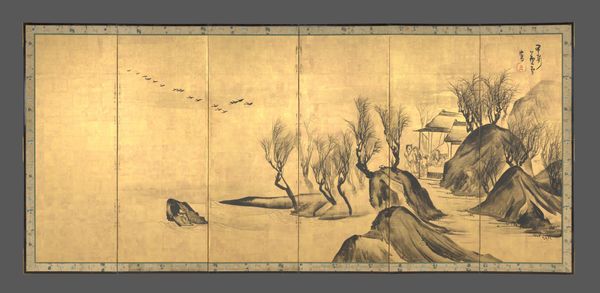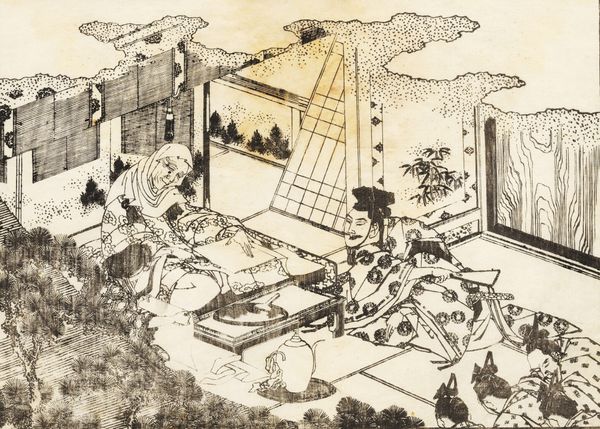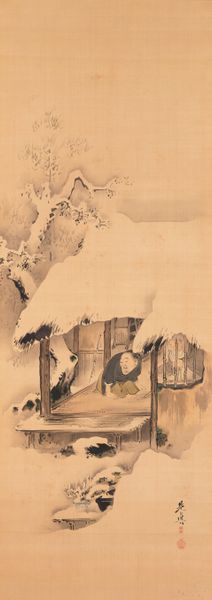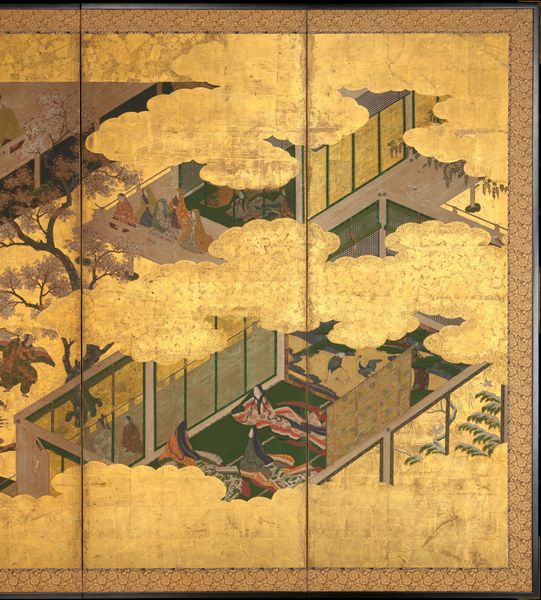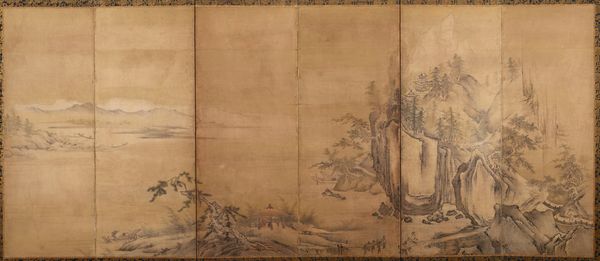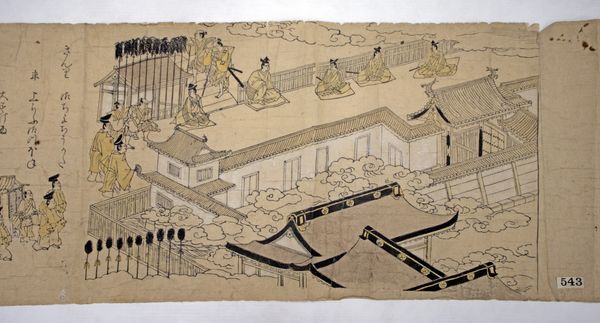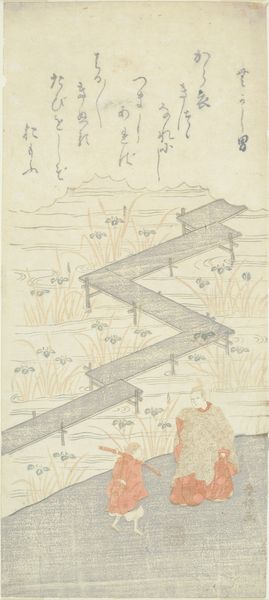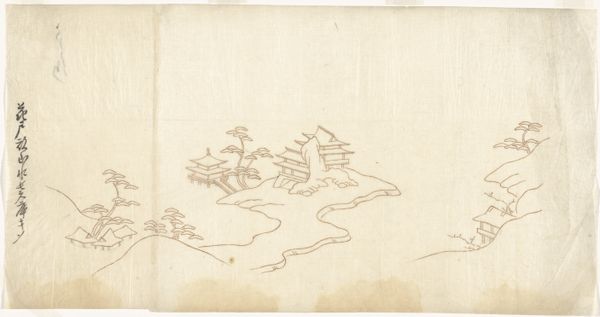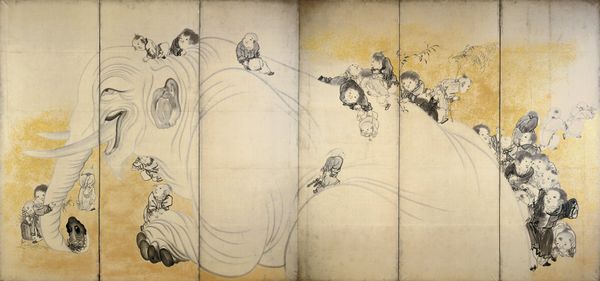
drawing, paper, ink
#
drawing
#
narrative-art
#
asian-art
#
landscape
#
etching
#
paper
#
ink
#
geometric
Dimensions: Image (each leaf): 5 5/16 × 5 1/8 in. (13.5 × 13 cm) Album: 7 1/8 × 6 1/8 × 1 3/16 in. (18.1 × 15.6 × 3 cm)
Copyright: Public Domain
Editor: This is a section from *Albums of scenes from The Tale of Genji*, made between 1600 and 1700 by Tosa Mitsunori. It's crafted with ink on paper. The bird’s-eye perspective is interesting, and the wispy clouds add a sense of mystery. What's the significance of this viewpoint? Curator: The elevated perspective isn't just about aesthetics. Think about how traditional East Asian art often employs a floating perspective. It's less about mimicking reality and more about presenting a symbolic landscape, one that transcends the limitations of earthly viewpoint. The clouds, then, act as visual anchors but also conceal and reveal, hinting at hidden narratives and unspoken emotions. It also reflects, possibly, an attempt at reflecting multiple timelines. Do you notice the patterns in the borders? Editor: Yes, the geometric shapes are very precise, which contrasts the amorphous clouds. They give an insight into the underlying structure. How do the geometric aspects of the scene relate to the narrative itself? Curator: Geometry can signify order and societal structures, mirroring the rigid courtly life depicted in The Tale of Genji. Consider how each shape contains certain symbols or signifiers. The positioning of the figures amidst this geometric framework – how they adhere to it or perhaps disrupt it – speaks volumes about their roles and desires within that society. Consider also how memory itself can seem geometric or ordered. Does this impact your interpretation? Editor: That’s a great point. So the ordered structure of the album actually underscores both the elegance and the constraints of courtly life depicted. I’m now considering it less as a singular depiction, and more as an archeological representation. Curator: Precisely. By deconstructing the visible elements, we’ve glimpsed the profound psychological and cultural landscape embedded within it. Editor: I think I am starting to see this work less like a picture and more like a historical document with psychological and symbolic layers!
Comments
No comments
Be the first to comment and join the conversation on the ultimate creative platform.
